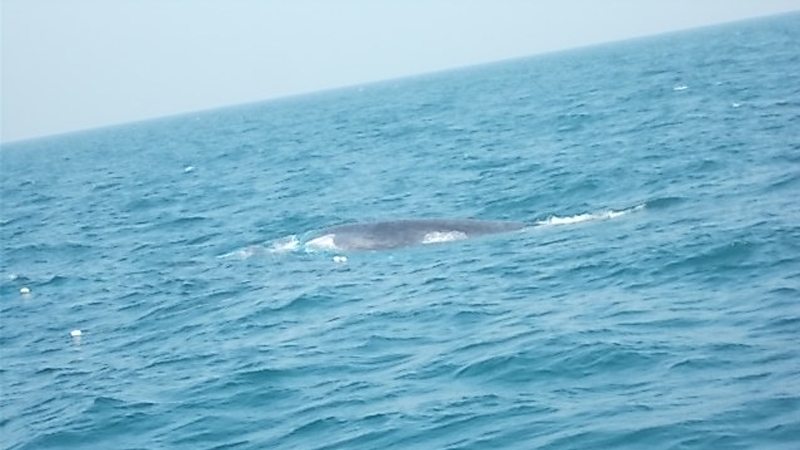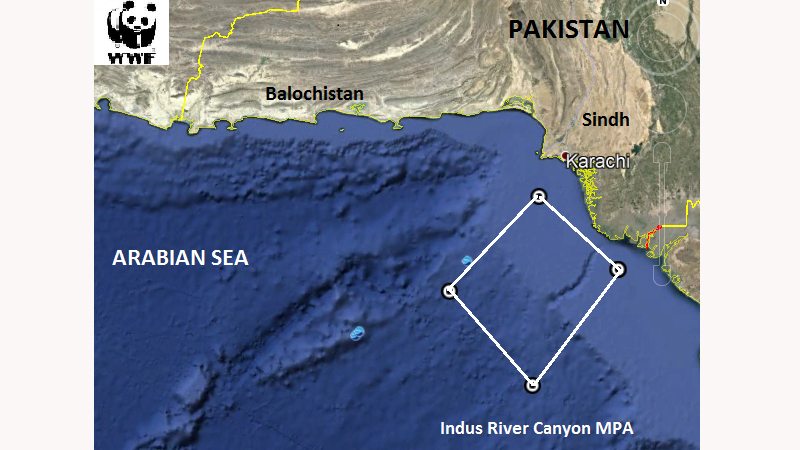 KARACHI: The Indus River Canyon, about 150 kilometres southeast of Karachi, was on Saturday declared a Marine Protected Area (MPA) by the federal Ministry of Climate Change.
KARACHI: The Indus River Canyon, about 150 kilometres southeast of Karachi, was on Saturday declared a Marine Protected Area (MPA) by the federal Ministry of Climate Change.
The only other MPA in the country is the Astola Island in Balochistan. It was notified in June last year.
The Indus River Canyon is a deep fissure located about 150 km southeast of Karachi and southwest of the Indus River. The area covers 27,607 square kilometres, making it the largest MPA in the Arabian Sea.
It extends to offshore waters with a maximum depth of about 1,800 m. The Indus Canyon has unique physical features, with sloping margins falling steeply to a depth of 1,800 m and then entering the deep Arabian Sea basin. The Indus Swatch is known to be rich in marine biodiversity including whales, dolphins, sharks and other fish as well as different species of invertebrates.
The canyon is an important fishing ground, especially for large sharks, whose population has been dwindling due to uncontrolled fishing practices.
The fauna found in the canyon include whales and dolphins.
At least 19 species of cetaceans like baleen whales, toothed whales and porpoises have been reported from the area. Some species including rough toothed dolphin (Steno bredanensis) and stripped dolphin (Stenella coeruleoalba) are only reported from this area along Pakistan’s coastline.
The Longsman’s beaked whale (Indopacetus pacificus) has also been reported from the area.
The area has been an important hunting ground for Russian whaling fleets, which hunted 164 Arabian humpback whales in 1966 from this area.
Most of the hunted females were observed to be pregnant indicating that this area is an important breeding ground of these rare whale species. In addition, this area has also been known as an important feeding ground for whales, as most hunted whales contained sardines and pelagic shrimps in stomachs; which indicates richness in productivity of IRCMPA. Aside from the diversified cetacean and elasmobranch (sharks) fauna, the Indus River Canyon is known to have rich fishery resources.
In a statement released on the occasion, WWF-Pakistan congratulated Syed Abu Ahmad Akif, Ministry of Climate Change secretary, for taking proactive action in declaring the Indus River Canyon as an MPA.
WWF-Pakistan regional head (Sindh and Balochistan) Dr Babar Khan said that the Fund WWF considered that the initiative would help protect marine ecosystem and contribute to the restoration and replenishment of resources for social, economic, and cultural enrichment.

Moreover, he hoped that whale sharks, sunfish, guitarfish and seabirds would not be harvested or killed. “This will ensure conservation of these species whose population is drastically declining along the coast of Pakistan,” he said.
The Convention on Biological Diversity (CBD), to which Pakistan is a signatory, requires nations under Article 2 to designate, regulate and manage geographically defined areas (protected areas) to achieve specific conservation objectives. By declaring the Indus River Canyon as a Marine Protected Area, Pakistan has achieved compliance to Aichi Target 11, which requires that by 2020 at least 17 per cent of terrestrial and inland water areas and 10 per cent of coastal and marine areas of a country are conserved.
Astola Island has an area of 400 square kilometres, thus by declaring Indus River Canyon as a Marine Protected Area Pakistan has achieved 11.2 % of Aichi Target 11 of its sea area as MPAs.
Published in Daily Times, December 7th 2017.